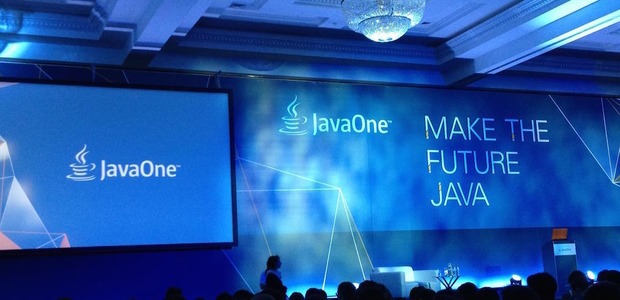advertisement
#oow15: 16-year old wins Duke’s Choice Award 2015 at Java One Conference Lilian Mutegi
Hania Gulagoussou, a 16-year-old California high school student is among this year’s winners of the Oracle 2015 Duke’s choice awards…

Hania Gulagoussou, a 16-year-old California high school student is among this year’s winners of the Oracle 2015 Duke’s choice awards announced at the Java One Confrence.
Water is a scarce resource, not just in drought-parched California but around the world. This 16-year-old California high school student used Java to develop the “Water Saver” application for a county science fair.
She chose Java because she found it simple, mature and reliable platform that runs on many devices. The main goal is to provide the user flexibility to control their water resource from anywhere using day-to-day devices and automatically limit the overuse of water when not needed.
advertisement
Another winner was e-finance, an Egypt based Java software house with the United Nations’ World Food Program (UN/WFP) School Subsidy Card. e-Finance developed the School Subsidy Card for Egypt’s Ministry of Education. It also provides students with food subsidies. The application is now live in Egypt as a pilot that helps 20,000 families in two poor cities.
Oracle announced the 2015 Duke’s Choice Award winners at a ceremony last night at the JavaOne conference.
The awards celebrate innovations that are based on the Java technology. Java is the foundation for virtually every type of networked application. As the world’s largest programming and computing platform for more than 9 million developers worldwide, Java enables the efficient development and deployment of innovative applications and services.
advertisement
The 13th annual Duke’s Choice Award winners were selected by a panel comprised of Java community leaders and Oracle technical staff. This year Java turns 20 and the winners reflect Java’s continued vitality as a cool technology improving business and social outcomes.
Other winners of the 2015 Duke’s Choice Award were:
TailTarget: Data Science for Advertisement Technology by TailTarget is a Java based system that applies Data Science at scale to provide real time insights that are changing the decision making process of the main companies in Brazil and Latin America.
AsciidoxFX: This is an AsciiDoc editor and toolchain written with JavaFX 8 with which one can easily write books, articles, e-books, slides in AsciiDoc format and produce PDF, HTML5, Docbook, Odt, Epub and Mobi outputs. Rehman Usta received this award and is also the Istanbul JUG leader.
ARM Research Labs: This company is a winner for contributing an implementation of the Constrained Application Protocol (CoAP) to the OpenJDK Kona project. The Cambridge, U.K., firm developed CoAP as a “very efficient RESTful protocol ideal for constrained devices and networks, specifically used in machine-to-machine (M2M) applications.” ARM donated CoAP to the Java OpenJDK Community for use in Internet-of-Things (IoT) applications.
advertisement
Byte Buddy: This is an open-source meta programming library from Rafael Winterhalter, an independent Java programmer and developer in Oslo, Norway. An increasing number of Java applications make use of annotations and generic types to determine their runtime behavior. When generating code, it is therefore important to take such meta data into account. Find more here. Find more here.
Omni Faces: A common theme this year was the need to address common programming issues. Arjan Tijms and Bauke Scholtz, two programmers from Netherlands, wrote OmniFaces for JSF, a free utility library for JavaServer Faces (JSF). OmniFaces is a utility library for JSF 2 that focusses on utilities that ease everyday tasks with the standard JSF API.
Daniel de Oliviera: This year Duke’s Choice is honoring this pioneer and researcher who is a founder of Brazil’s oldest JUG, DFJUG of Brasilia, and an inspiring Java Champion. Brazil now has one of the largest and most active Java communities in the world. De Oliviera was also active in organizing BrazilJUGs, a month-long series of activities honoring 20 years of Java.
Gluon: This Belgium software house is looking at the needs of Java developers holistically with Gluon Cloud, Gluon Charm and Gluon Particle. Their goal is to pull together and add new functionality in a compelling product library for client-side development. This is because Gluon Charm and soon Gluon Particle can help to rapidly kickstart the development of applications on desktop, mobile devices and embedded devices, like Raspberry Pi.
KumuluzEE: Many Java developers looking for more with service oriented architectures (SOAs) are turning to a microservice architecture instead, to take advantage of better scalability, manageability, flexibilitiy and upgradeability. Kumuluz, a Ljubljana, Slovenia, software house developed the KumuluzEE framework, the first for micro services using standard Java APIs. A microservice architecture focuses on developing applications into services and deploying these independently; a true micro service architecture is not possible in Java EE without a framework that automates deployment and configuration.